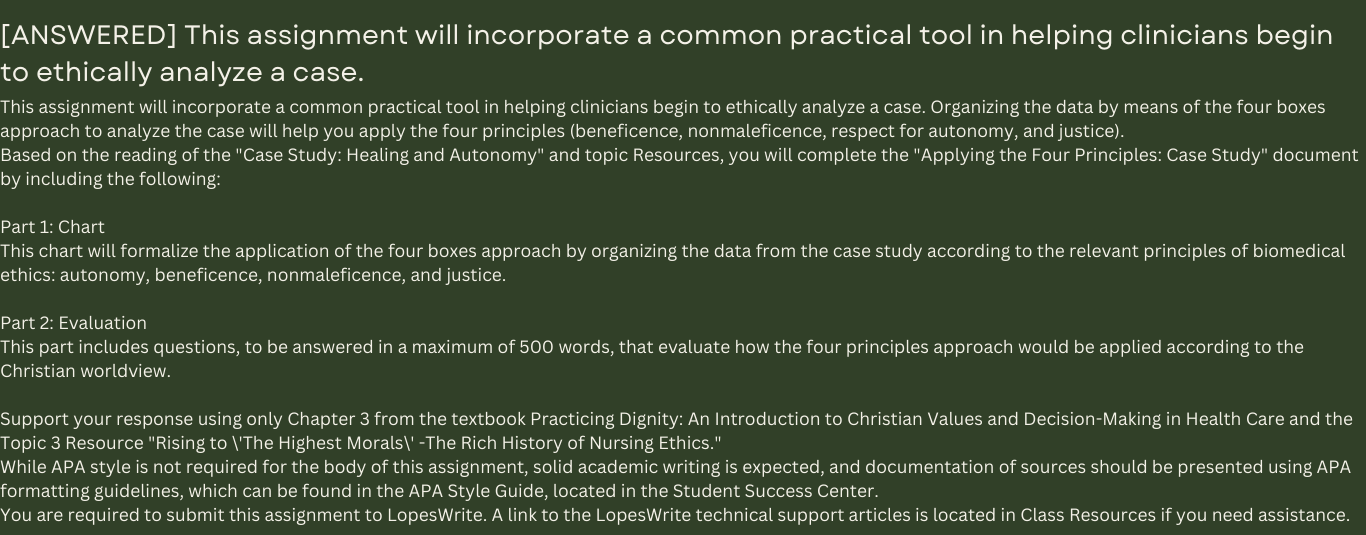
This assignment will incorporate a common practical tool in helping clinicians begin to ethically analyze a case. Organizing the data by means of the four boxes approach to analyze the case will help you apply the four principles (beneficence, nonmaleficence, respect for autonomy, and justice).
Based on the reading of the “Case Study: Healing and Autonomy” and topic Resources, you will complete the “Applying the Four Principles: Case Study” document by including the following:
Part 1: Chart
This chart will formalize the application of the four boxes approach by organizing the data from the case study according to the relevant principles of biomedical ethics: autonomy, beneficence, nonmaleficence, and justice.
Part 2: Evaluation
This part includes questions, to be answered in a maximum of 500 words, that evaluate how the four principles approach would be applied according to the Christian worldview.
Support your response using only Chapter 3 from the textbook Practicing Dignity: An Introduction to Christian Values and Decision-Making in Health Care and the Topic 3 Resource “Rising to \’The Highest Morals\’ -The Rich History of Nursing Ethics.”
While APA style is not required for the body of this assignment, solid academic writing is expected, and documentation of sources should be presented using APA formatting guidelines, which can be found in the APA Style Guide, located in the Student Success Center.
You are required to submit this assignment to LopesWrite. A link to the LopesWrite technical support articles is located in Class Resources if you need assistance.
Expert Answer and Explanation
Topic 3: Applying the Four Principles: Case Study
Part 1: Chart (60 points)
Ethical Issues Based on the Principles of Beneficence Nonmaleficence, autonomy and Justice and Fairness
| Medical Indications
Beneficence and Nonmaleficence |
Patient Preferences
Autonomy |
|
|
| Quality of Life
Beneficence, Nonmaleficence, Autonomy |
Contextual Features
Justice and Fairness |
|
|
Part 2: Evaluation